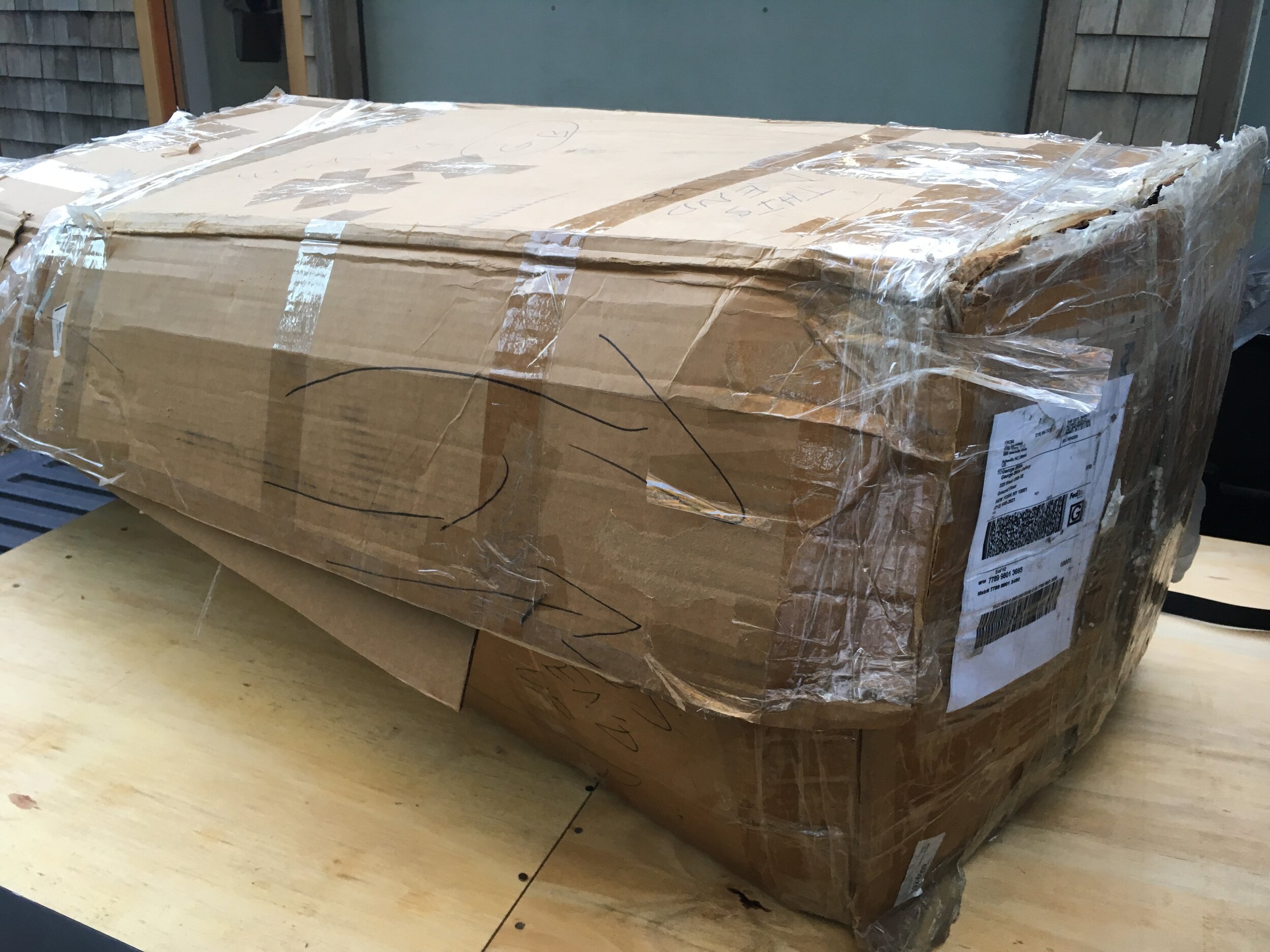Last year a Potential Client emailed about buying some work. I replied with a list of galleries that represent me and advised that I also had studio inventory. He asked for studio inventory, specifically paint tubes.
I don’t recall what it was that tipped me off, but I had the feeling he was trying to back door one of my galleries. I directed him to the gallery. He replied that he had already been there, so I informed the gallery and asked them to deal with him.
Sketch for Artists’ Pencil Set (stubby)
Through the gallery I responded to a slew of questions: is this still available, what about that, how much for this, can you make something like that, and so on. I even made a sketch for a commission based on the Artists Color Pencil Set.
After a week of furious churning the gallery advised that the client wanted something to go with a blue sofa being delivered in January and was going to wait before making a purchase. Needless to say, nothing happened.
Members Only
Fast forward one year, almost to the day. The Poser (based on prior experience he’s no longer a Potential Client) inquires about the piece Members Only, including in the email a picture of it from my website. The piece is in my inventory.
Ruefully recalling the previous year’s charade I him offer it to him at full price with the intention of cutting a check to the gallery if it sells. I’m going to nip this back-door discount bullshit in the bud right away.
The Poser replies “Do you still work with ________ Gallery? Do they have any matchbooks?”
I send him pictures of the galley’s inventory. Then I call the gallery. “What? He was in here last weekend looking at your work!”
The Poser emails again: “What else do you have available?”
I reply (with a CC to the gallery) “please contact the gallery.” The Poser responds that he prefers the piece in my inventory that he originally inquired about. I ignore him. Then he emails me and the gallery, “Who should I deal with regarding the Members Only piece?”
The rest of the exchange went like this:
Gallery: With the gallery please.Poser: Thank you. I wasn’t sure if that piece was in your possession. Do you have time to discuss this week? [He knew I had the piece]Gallery: The work is not in our possession. We can obtain it from the artist if you’re interested. It is always the preference of the gallery and the artist that you deal with us directly; attempting to circumvent that relationship will not get you a better price or endear you to either party.Poser: Let me be clear. I reached out to ______ who is no longer employed by your gallery. I then reached out to _____ who did not respond to me for a week. That is why I contacted Miles directly. Pointing an accusatory finger at me is does not endear yourself to me either. I own a lot of art and work with many galleries and artists. If you are not happy with the way I went about purchasing this piece, then I can find something else. Thanks again.Gallery: I’m sorry if the gallery did not immediately respond to you. Going directly to our artists is unacceptable. If that’s a problem for you, that’s totally OK feel free to shop elsewhere.Poser: It is not a problem for me but understand, if your team is unresponsive then there is nothing that prohibits me from reaching out to the artist directly. Mr. Jaffe has a website with contact details. There is nothing that says I can not send him a message. I am happy to work with a gallery but my hope is that they would be responsive and respectful. Gallery: Let’s not pretend like that’s what happening here; you have been in and out of the gallery for years. You have my contact information, the Gallery‘s phone number, and ____ was certainly not the issue. You saw what you believed was an opportunity to get yourself a better price and you took it. I get it. But I don’t need it.I’m in full ignore mode now, I don’t want anything to do with this guy. In the meantime the piece has gone on hold for a REAL client. Then I get a call from another gallery, they’ve got somebody hot for Members Only.
“Is his name Poser?” Of course.
The Poser is raising the gallery’s hopes for a non-existent sale during a raging pandemic that has shattered normal economic activity. Now I have to burst the gallery’s bubble and explain the situation to them. The very last thing I need is some idiot screwing up my gallery relationships.
What other mischief can this fool cause? Just as I am reaching out to another of my galleries with a warning, they contact me about a guy named Poser who is looking for Members Only.
WTF is wrong with this jackass? He didn’t take the piece he wanted when it was offered to him. How do I stop this nonsense? Maybe if I offer to make him a variation of the piece he didn’t take (at a higher price, of course) and now so desperately wants he’ll bugger off. So I send him a polite note, apologizing that the piece is no longer available and offering him the opportunity to commission a unique variation of it.
His reply? “Thank you for your note. What else do you have?”
tire kicker






![[The Economics of Art]](https://images.squarespace-cdn.com/content/v1/554781e3e4b08d5dd9374f66/1573940113734-S7CFI9BUXDSC8HWSR9GG/Economics+of+Art+-+Miles+Jaffe.jpg)
![[Artists’ Color Series paint tubes individually wrapped in preparation for shipping.]](https://images.squarespace-cdn.com/content/v1/554781e3e4b08d5dd9374f66/1572466645248-WB2U2PV8K9B6P5SMZG4O/IMG_5730.JPG)
![[A typical plywood-lined, solidly-packed box waiting for pickup at my studio.]](https://images.squarespace-cdn.com/content/v1/554781e3e4b08d5dd9374f66/1572465804266-VN7ON59Z3WNJVEMCO3WU/IMG_5968.JPG)
![[How I received the work back.]](https://images.squarespace-cdn.com/content/v1/554781e3e4b08d5dd9374f66/1572466937249-EXK5E7N4V4SRVQ00M6PI/IMG_7910.JPG)


![[Nice packing job.]](https://images.squarespace-cdn.com/content/v1/554781e3e4b08d5dd9374f66/1572466953982-EVT9CSEGRVQXSMAANEZF/IMG_7905.JPG)
